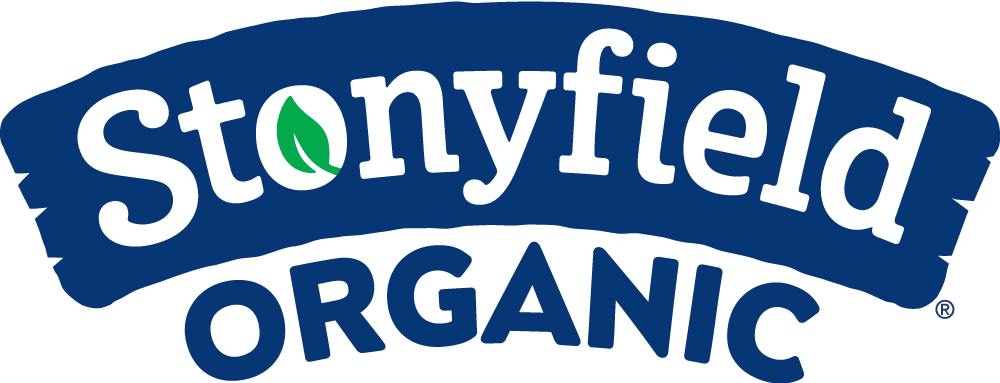
HEALTHY PLANET
Stonyfield has long been a corporate leader when it comes to addressing climate impact. Half of our business’ emissions come from agriculture. We continue to work diligently within our supply chain toward our science-based targets by employing and exploring emissions reduction strategies across agriculture, manufacturing, our supply chain, and packaging.
Our Climate Goals and progress
Stonyfield has science-based targets to reduce greenhouse gas emissions that are verified by the global organization Science Based Targets initiative (SBTi). Our current SBT is based on a 2017 baseline and requires a 30% absolute emission reduction across scopes 1, 2, and 3 by 2030. We are in the process of restating our SBT to increase our ambition from aligning with a 2C to 1.5C pathway, and to ensure that our targets align with the SBTi’s Forest, Land, and Agriculture (FLAG) framework and zero deforestation guidelines. In support of this, we are updating emission factors and the methodologies that we use to calculate our greenhouse gas (GHG) footprint in accordance with current EPA and Greenhouse Gas Protocol guidelines.
This carbon footprint chart illustrates the distribution of our greenhouse gas emissions across the different stages of our business, helping guide our mitigation efforts.
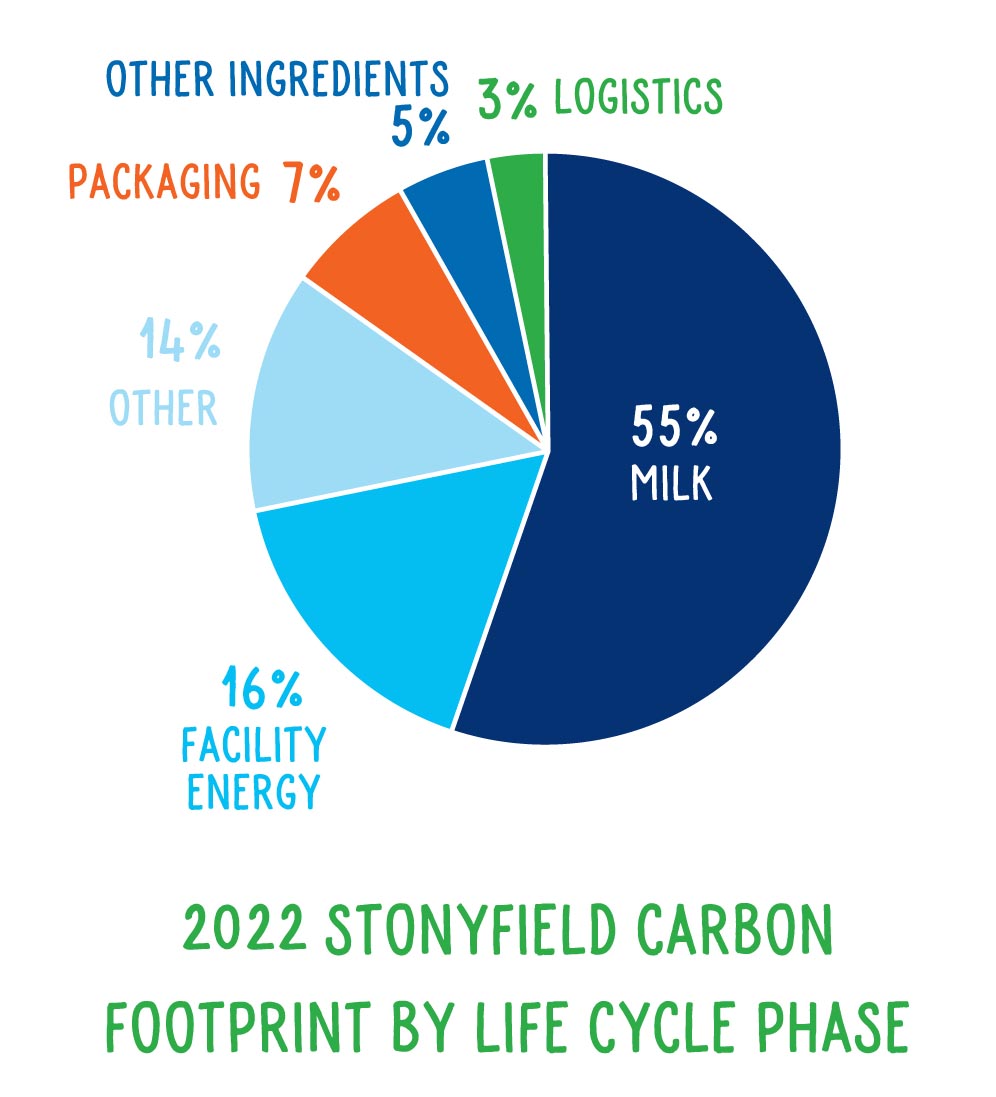
In 2022, STONYFIELD’S “OTHER” CATEGORY WAS THE THIRD LARGEST CONTRIBUTOR OF EMISSIONS
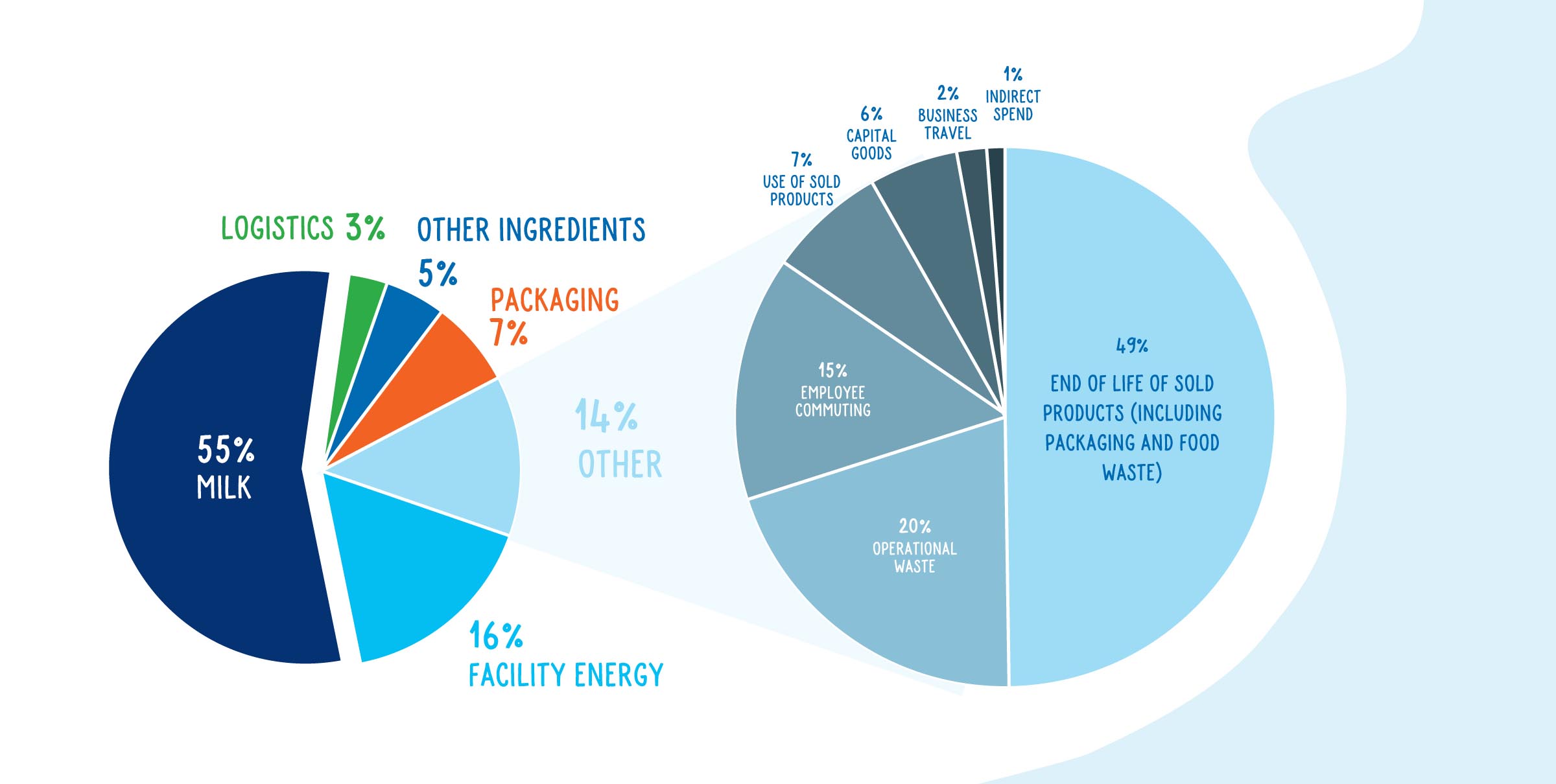
unpacking our carbon footprint
At Stonyfield, understanding and managing our carbon footprint is key to our commitment to sustainability and addressing climate change. We set science-based targets in alignment with the 2015 Paris Climate Agreement to measure and reduce our emissions, which are grouped into three scopes following the GHG Protocol.
6500*
Scope 1: Direct Emissions
These are emissions that come directly from sources that Stonyfield controls, like emissions from company vehicles and manufacturing.
2,000*/7,000*
Scope 2: Indirect Emissions from Energy
These emissions come from things like the electricity, steam, heating, and cooling that power our operations. We track the emissions in two ways:
We track these in two ways:
- Location-based: This method uses general EPA emission factors based on where our energy is sourced.
- Market-based: This method uses general EPA emission factors based on where our energy is sourced, and also considers the impact of the renewable energy credits that we purchase.
368,000*
Scope 3: Indirect Emissions from Our Value Chain
These emissions are from activities not directly controlled by Stonyfield: the production of ingredients we buy, the processing of our products at locations we do not own, the transportation of our products from farm to processing facilities, and from disposal of our products.
*UNITS ARE IN METRIC TONNES OF C02
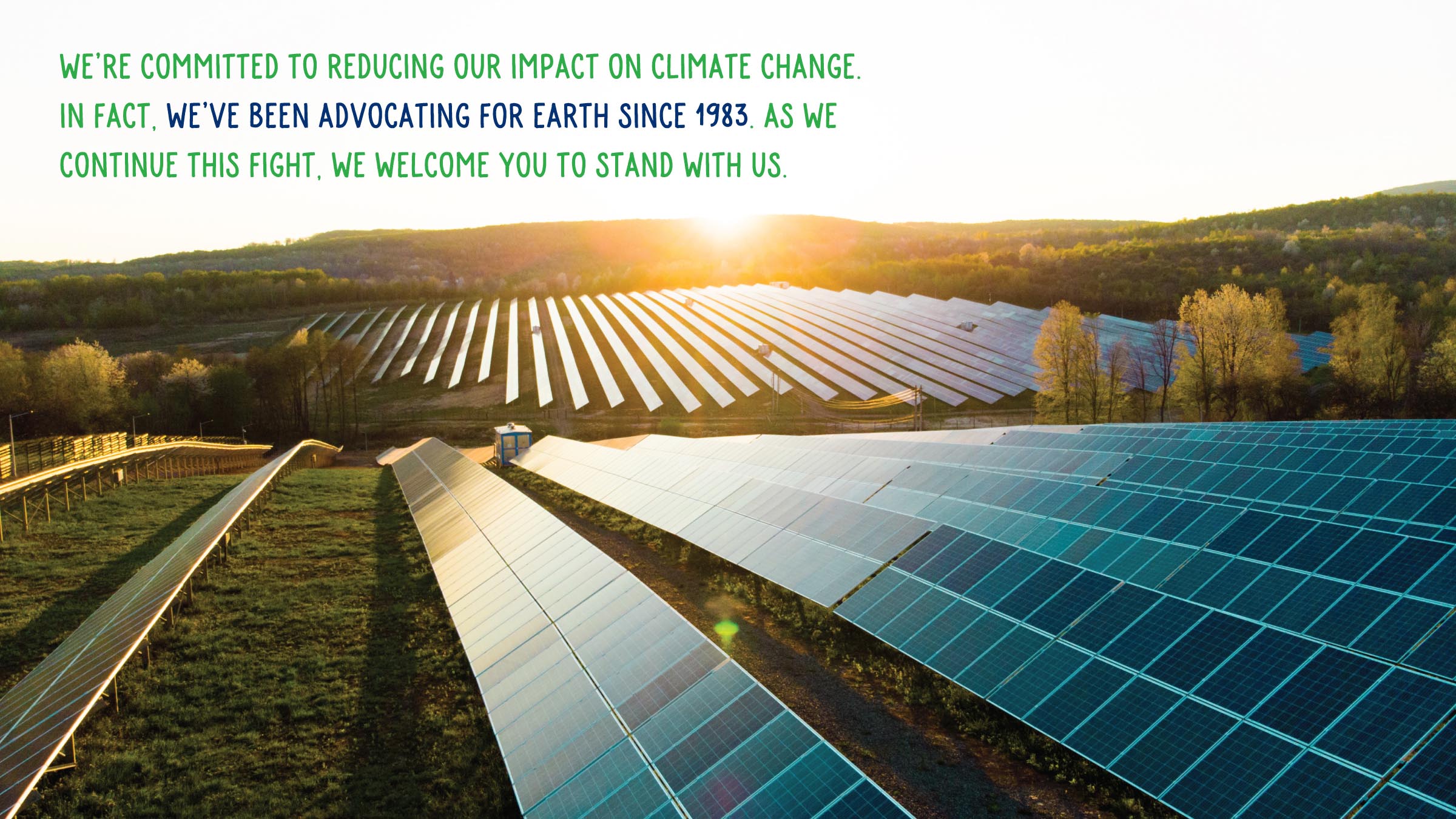
100% renewable electricity achieved at the Londonderry facility
Stonyfield is proud that we are now in our second year of operating our Londonderry manufacturing facility in New Hampshire with 100% renewable electricity. We continue to explore strategies that would allow us to achieve our goal of using 100% renewable energy there by 2025, which would include the reduction or elimination of natural gas for heat and the purchase of applicable credits and offsets. Stonyfield was able to achieve the electricity portion of this milestone well ahead of schedule by employing versatile solar energy initiatives, including producing our own solar electricity, supporting new solar installations in the Midwest to obtain the environmental attributes, and purchasing a dedicated supply of Renewable Energy Credits (RECs). We will report more on our progress toward this goal next year.

Setting sustainability goals for Stonyfield packaging
Packaging is a major environmental factor for consumer goods. Stonyfield has set sustainability goals for the packaging of all Stonyfield products, including the use of recycled and bio-based content and improving recyclability. Our sustainable packaging goals include:
goals
- 100% recycled/bio-based content by 2030
- Light-weight all packaging components 10% by 2030
- Reduce greenhouse emissions from packaging by 15% by 2030
- Remove toxins in packaging beyond the FDA requirements
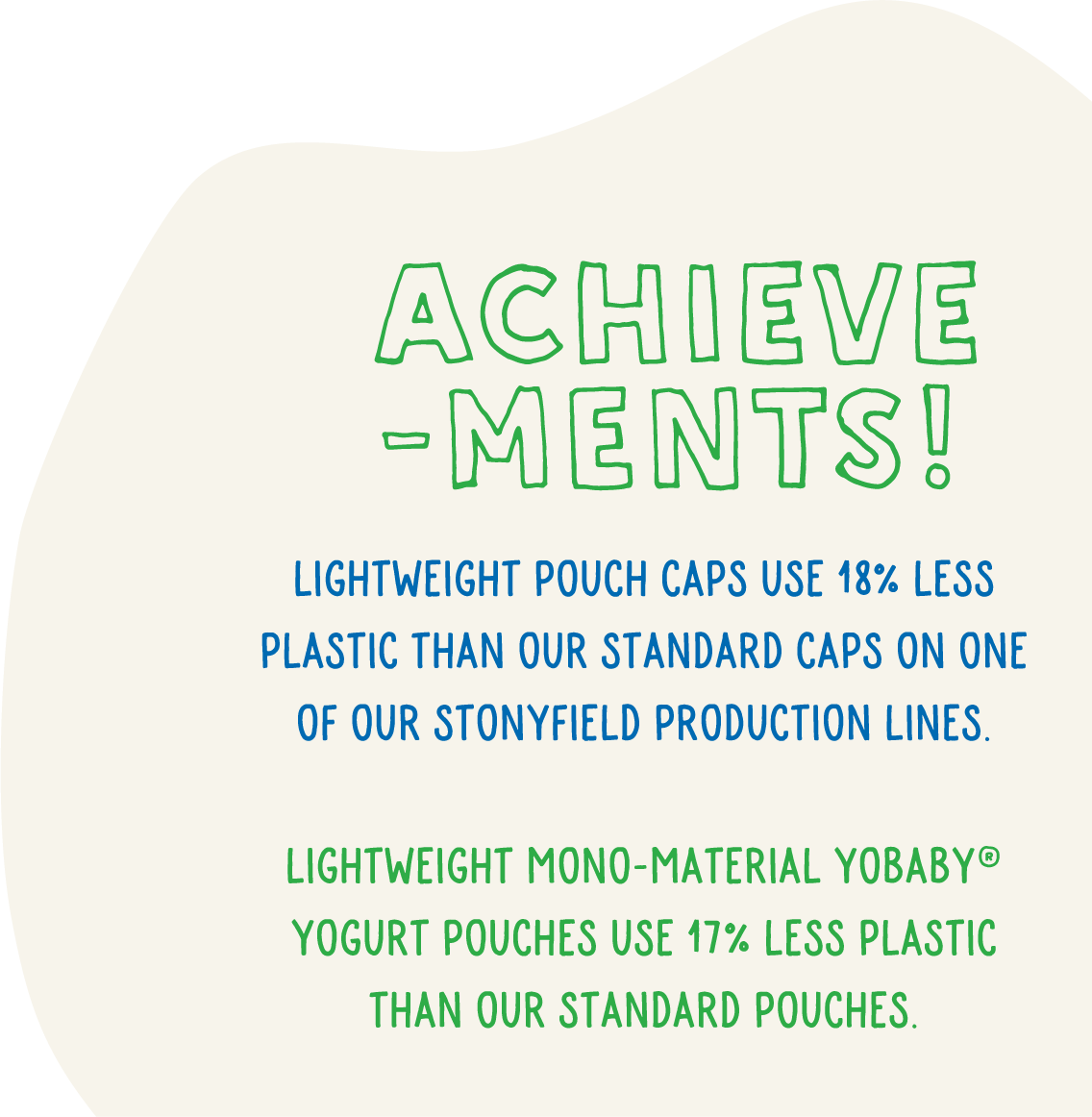
reducing food waste
Food waste is responsible for 8% of the world’s GHG emissions, and Stonyfield works diligently to avoid wasting organic products and to reduce our carbon footprint. To help reduce waste Stonyfield worked with Spoiler Alert in 2023 to implement solutions to limit wasted product through better inventory management. Better inventory controls that lead to waste reduction procedures help reduce emissions , contribute to food donation programs, and enhance supply chain sustainability. This shift involved digitizing the discounting process, unifying procedures for different brands, and introducing new discount buyers. The result: more food sold, less food wasted, increased product access to more diverse consumers, and decreased emissions resulting from unused products.
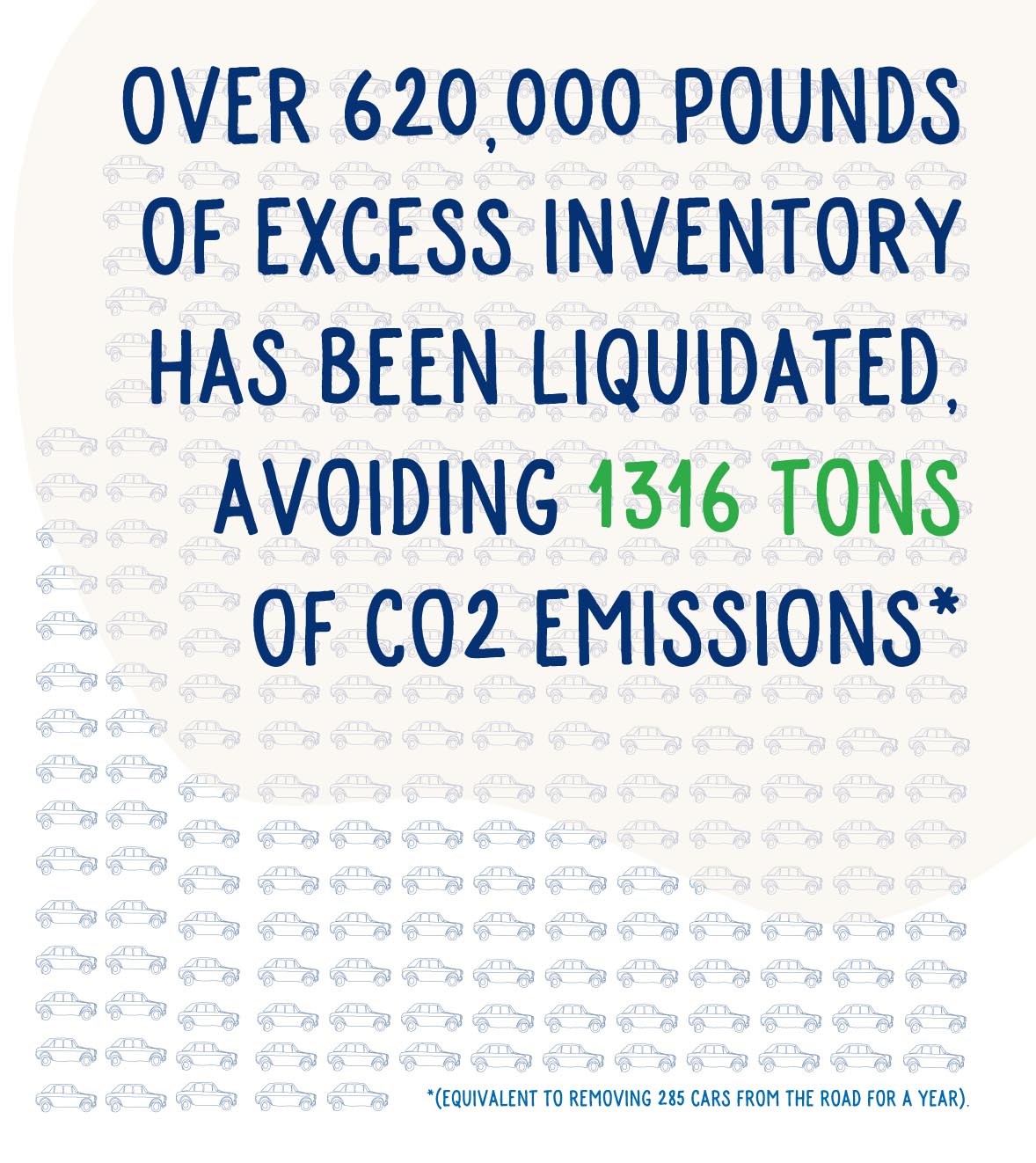
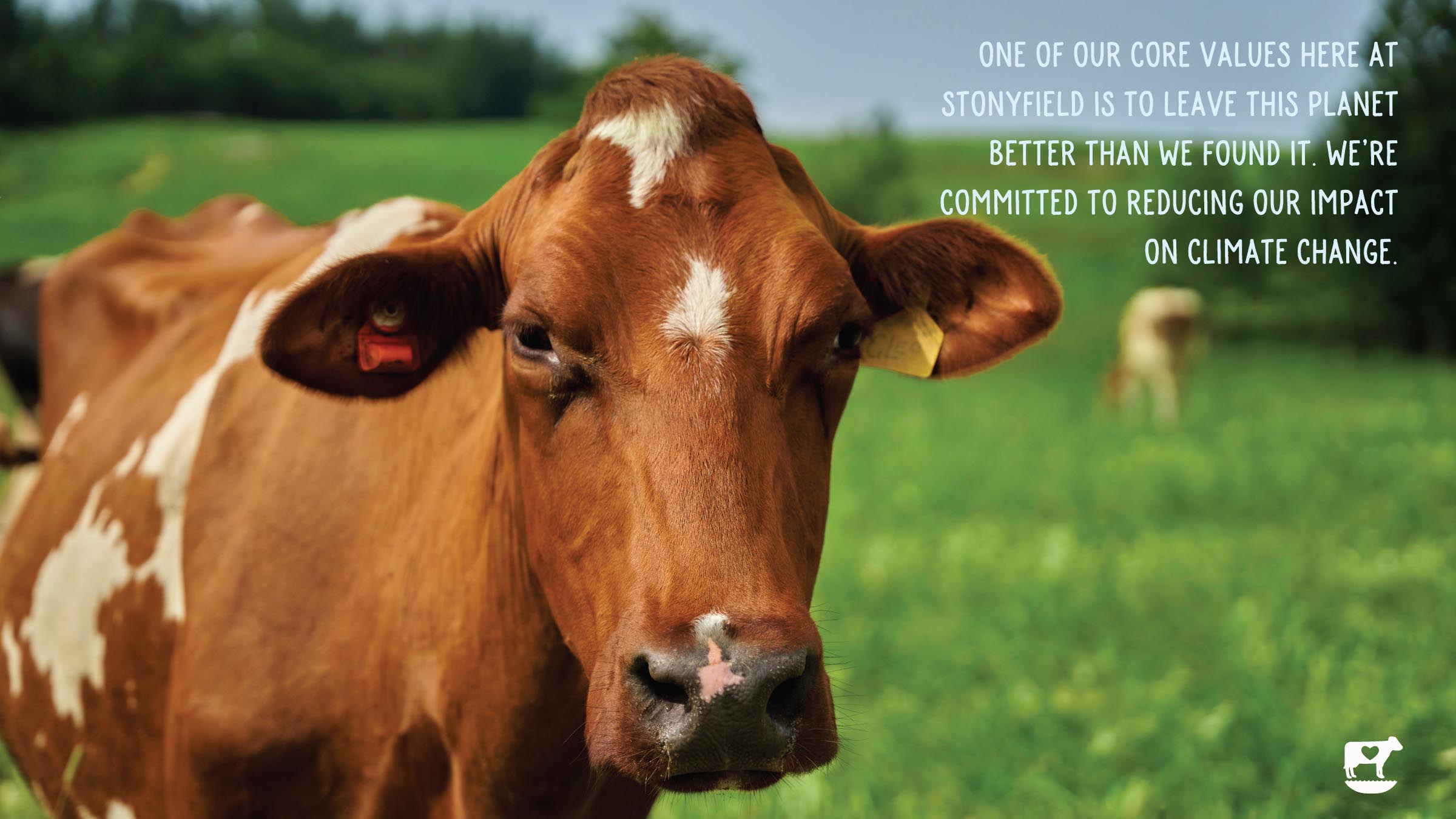
Getting the big-data picture to drive greenhouse gas reductions
To tackle the reduction challenges in agriculture, Stonyfield teamed up with Wolfe’s Neck Center, the Foundation for Food and Agriculture Research, the USDA, and others to create OpenTEAM. This initiative brings together diverse stakeholders to share knowledge, develop unified data approaches, and ensure data privacy. Through OpenTEAM, we’re enhancing the efficiency of data management with our tech and measurement collaborators. Cool Farm Tool is one tool we use to measure the cradle-to-farm-gate emissions on farms in our direct milk supply chain. Every farm in our direct milk supply is assessed at least once every three years to support our carbon accounting towards our science-based target. The results identify emission “hot spots,” which helps guide our work to address these emissions.
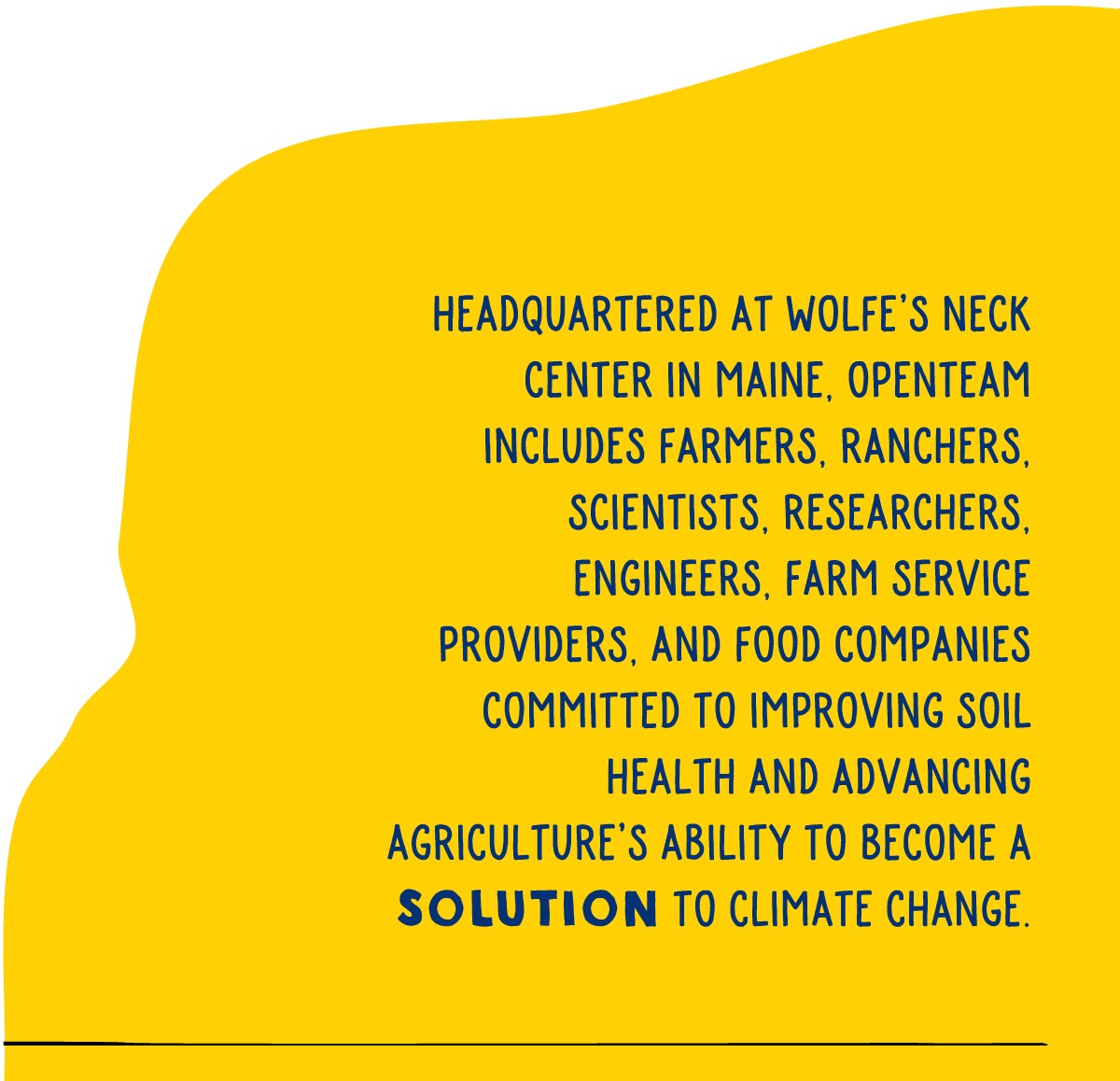
Climate-smart manure management progress

Stonyfield’s strategy to reduce on-farm greenhouse gas emissions includes a focus on farmers’ manure management efforts, which refers to the handling, storage, and disposal of animal waste. Manure is a problematic greenhouse gas emission “hotspot” because manure can release methane and nitrous oxide during decomposition. Proper manure management practices are important to reduce these emissions, recycle nutrients back into the soil, and protect water quality. These efforts illustrate Stonyfield’s deep belief in organic farming, because doing right by the planet supports all organic farmers, not just our direct milk suppliers.
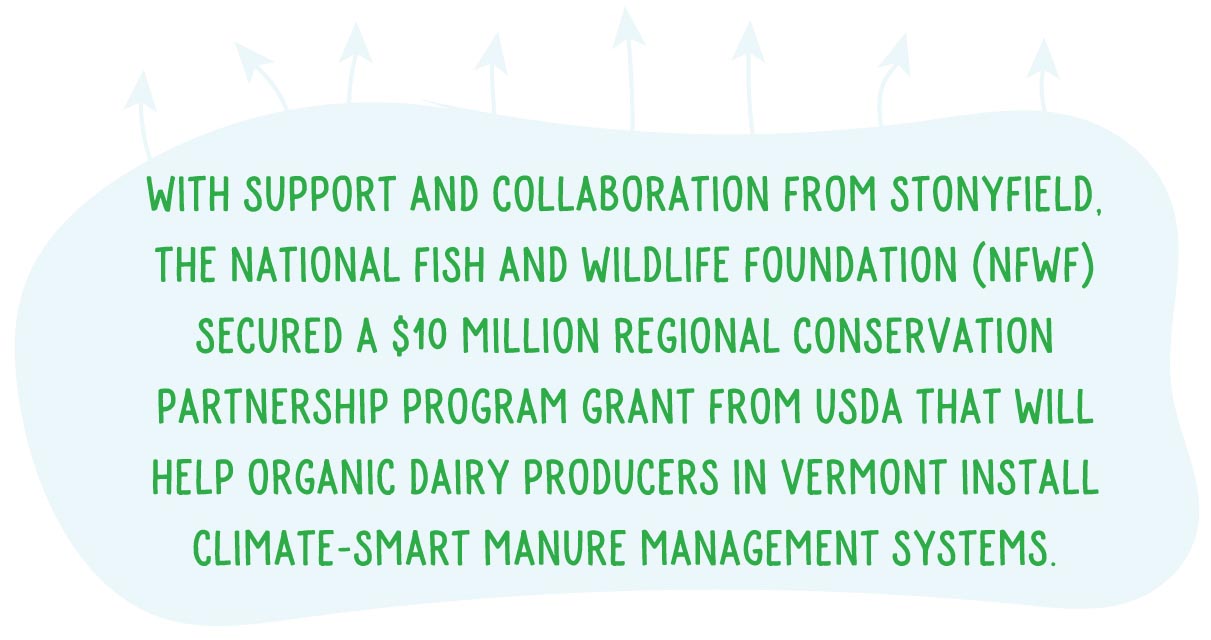
The goal is to address significant greenhouse gas emissions stemming from manure on farms as well as some of the financial constraints in upgrading manure management systems.
Better practices for grazing and growing on pasture
Inefficient animal grazing practices cause soil degradation and reduce soil carbon sequestration. These practices can produce problematic greenhouse gas emission “hotspots” on farms. Similarly, feed production — growing and processing of feed crops for livestock — is a significant hotspot due to the emissions associated with land use changes, cultivation, and transportation. Stonyfield is committed to helping farmers in our supply chain implement grazing and forage production practices that reduce emissions and promote sustainable grassland ecosystems. Stonyfield is in the process of identifying practices to reduce GHG emissions from pasture management by working with The Soil Inventory Project and Regrow to measure and model the impacts of organic practices on soil carbon sequestration and field emissions. This project, involving extensive soil sampling and analysis, aims to find the most impactful ways to enhance soil health and inform tailored improvements for farmers, leading to more effective climate mitigation.
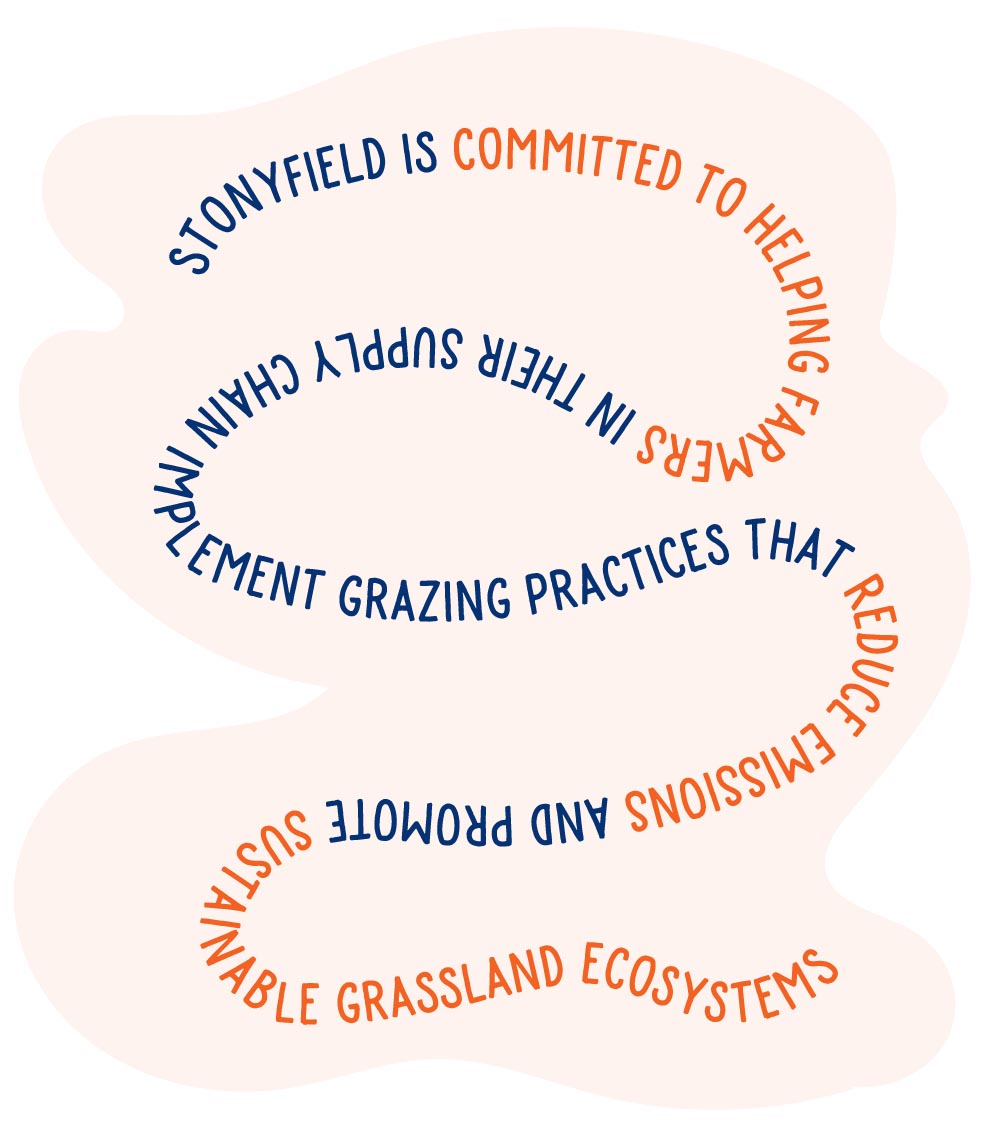
Let them eat seaweed: reducing methane emissions from cows
Enteric methane emissions produced through cows’ digestion are the largest source of emissions on Stonyfield’s direct milk supply farms. To address this problematic greenhouse gas emission “hotspot”, Stonyfield is collaborating with Bigelow Laboratory, UNH, UVM, and others in a groundbreaking project researching the use of Gulf of Maine seaweed as a feed additive to mitigate enteric methane emissions produced during digestion. At Stonyfield’s annual direct milk supply farmers meeting, producers and seaweed researchers gathered at UNH’s research farm for a day of learning about on-farm methane and discuss how research could transition to a commercial setting. This innovative research holds promise for reducing greenhouse gas emissions while benefiting dairy and beef production, and also supporting the local Northeast marine economy. Initial tests conducted in 2023 showed encouraging results, and long-term trials set for 2024 will allow for analysis on the full impact of the kelp product on methane production and intensity.

An alliance to publicly disclose and take action on methane emissions
Together with our parent company, Stonyfield has joined a major effort to monitor and reduce greenhouse gases from agriculture. The Dairy Methane Action Alliance is a global initiative that accelerates action and accountability on methane across the dairy sector. By joining this groundbreaking initiative, signatory companies commit to annually account for and publicly disclose methane emissions, and to publish and implement a comprehensive methane action plan. The Environmental Defense Fund and the sustainability nonprofit Ceres will hold these companies accountable as their plans are implemented.
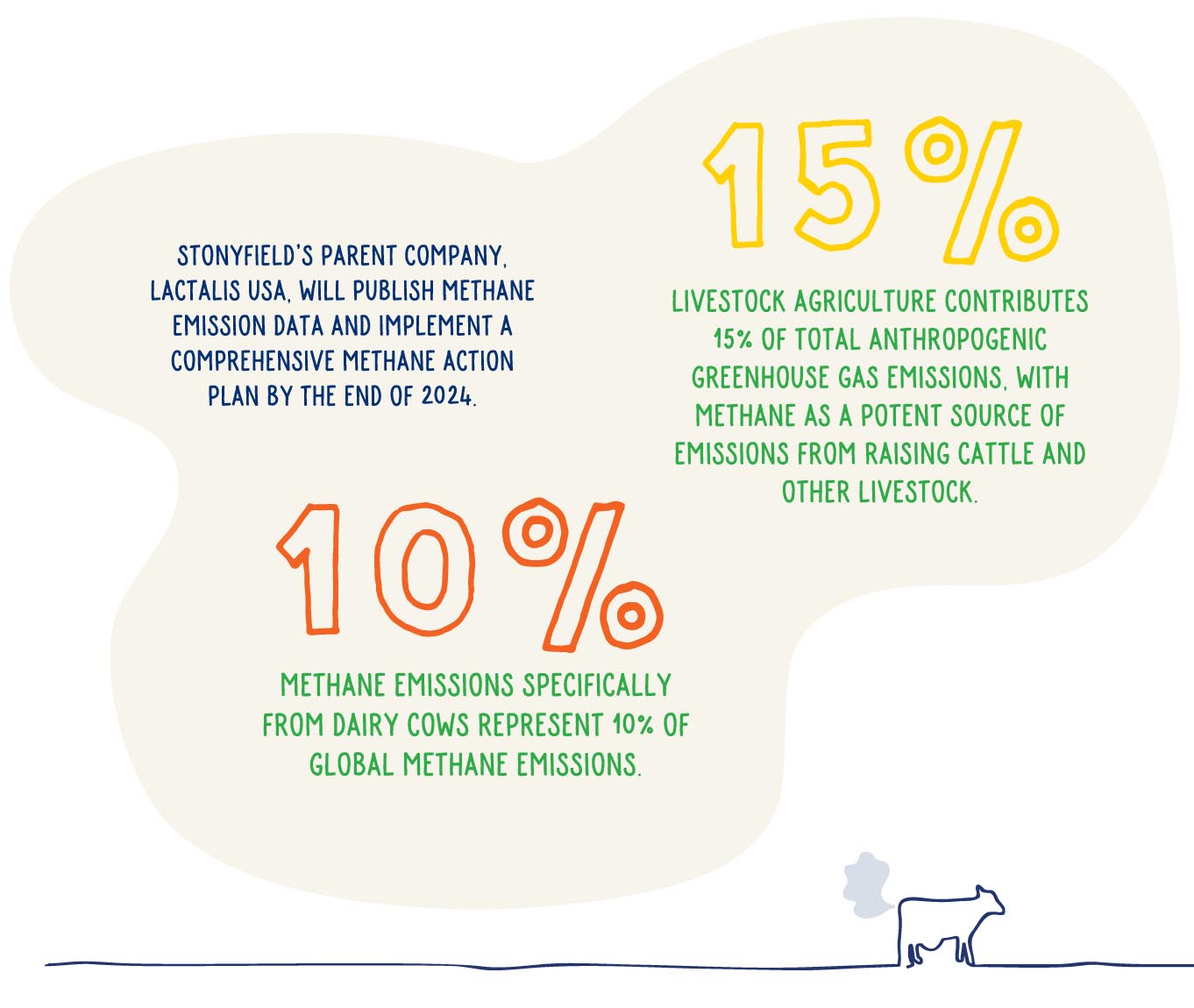
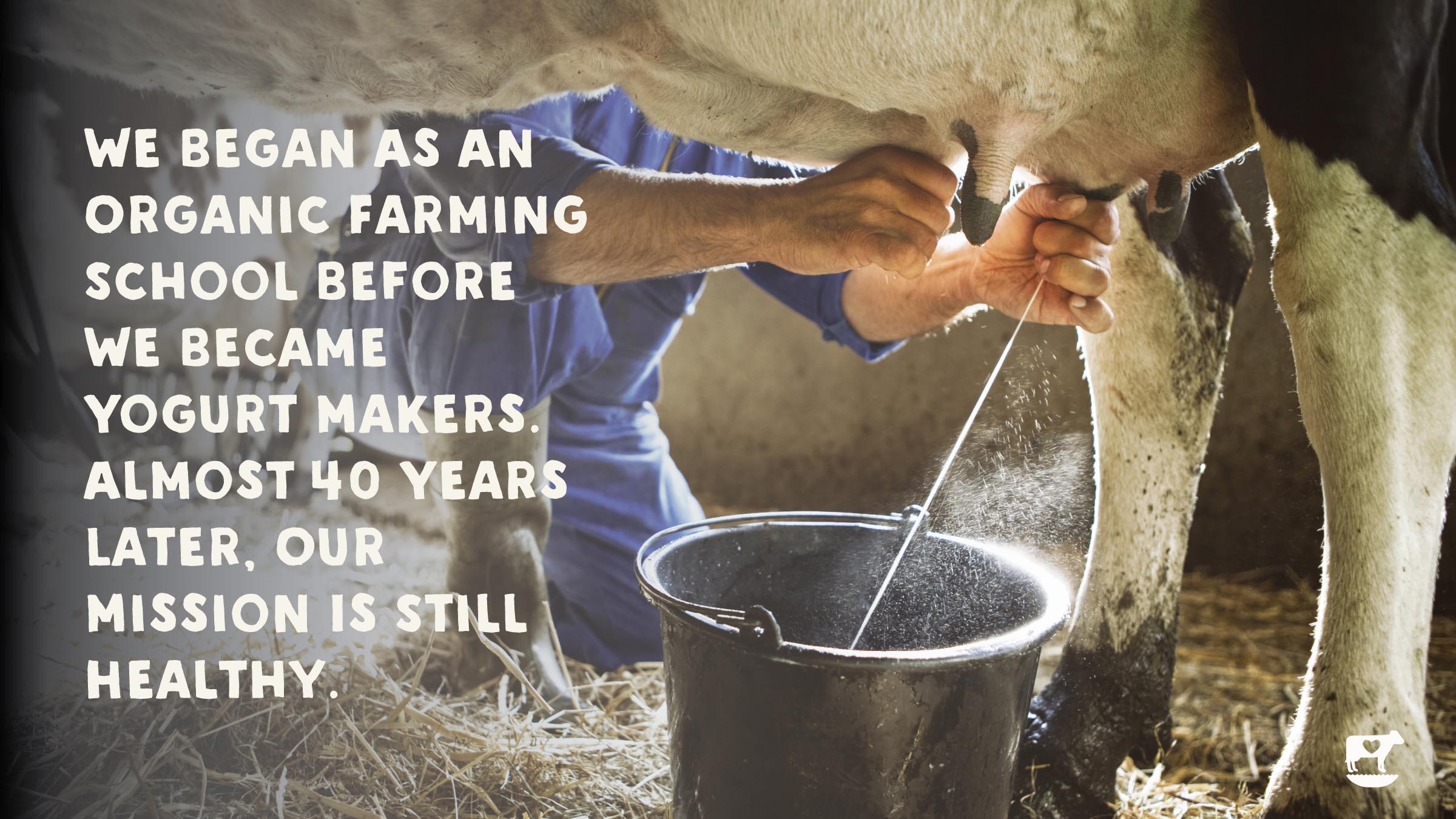
Championing climate laws and organic standards in Congress
Stonyfield remained active in the policy arena in 2023 with a focus on the Farm Bill, including enhanced organic regulations through support for the Continuous Improvement and Accountability in Organic Standards Act (CIAO Act). The company also pushed for increased funding for organic research through the Support Organic Agriculture Research (SOAR) initiative. In collaboration with Wisconsin Sen. Tammy Baldwin and New Hampshire Rep. Annie Kuster, Stonyfield supported the development of the Organic Market Development Grants Act to complement USDA efforts to help farmers transition to organic. Grants from these efforts expand organic processing infrastructure so producers have a clear way to get their products to market. Stonyfield also advocated for the preservation of $20 billion in funding for Farm Bill conservation programs provided in the Inflation Reduction Act in 2022. Stonyfield’s policy advocacy, along with others in the organic dairy sector, led to the USDA’s creation of the Organic Dairy Market Assistance Payments, which allocated $20 million to the organic dairy sector in 2023.
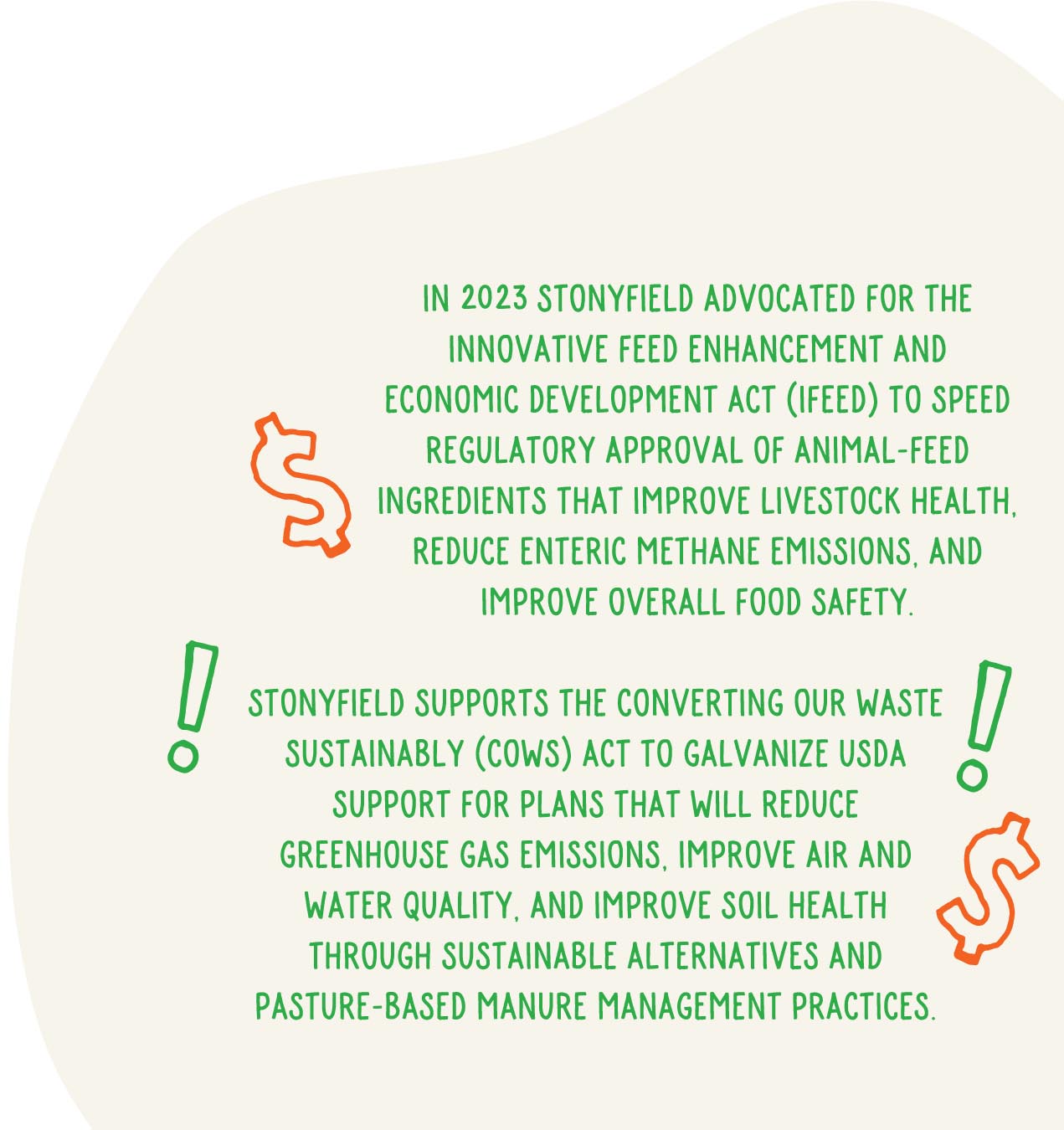
good on purpose
